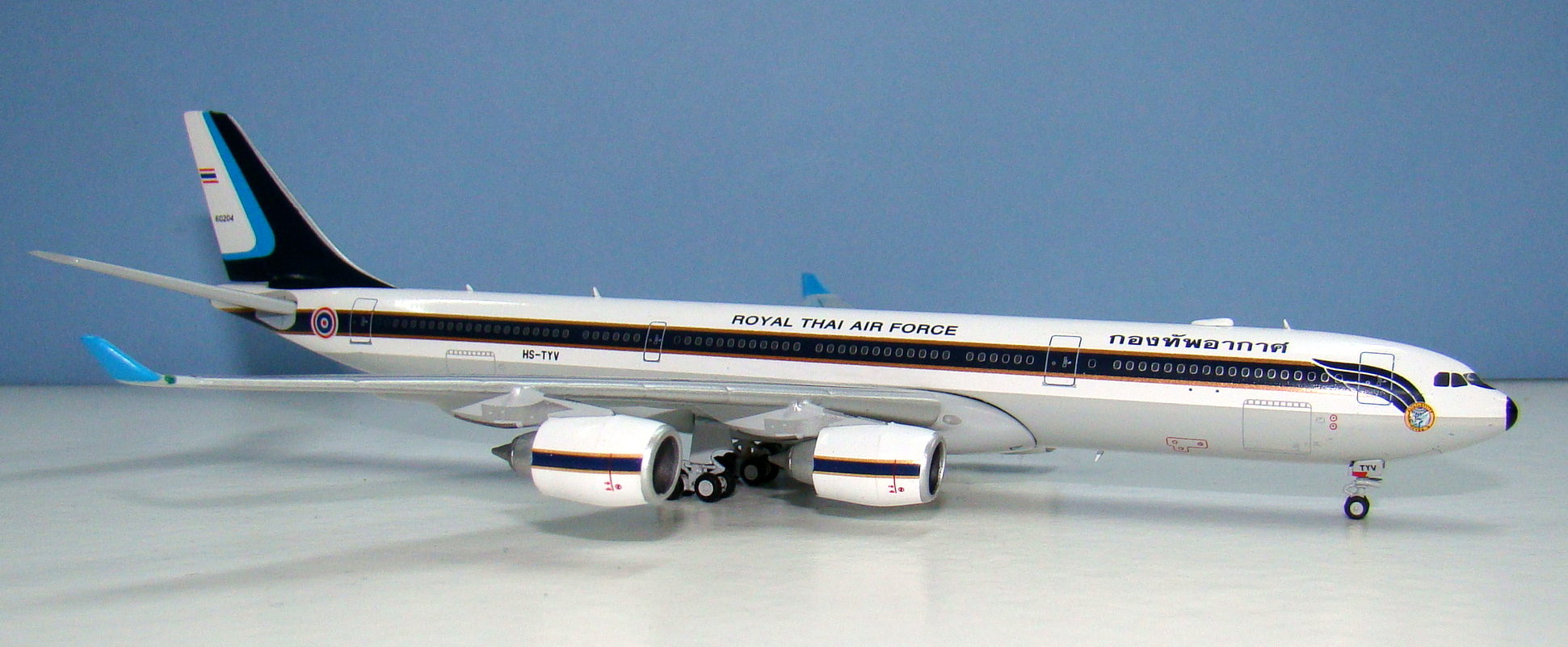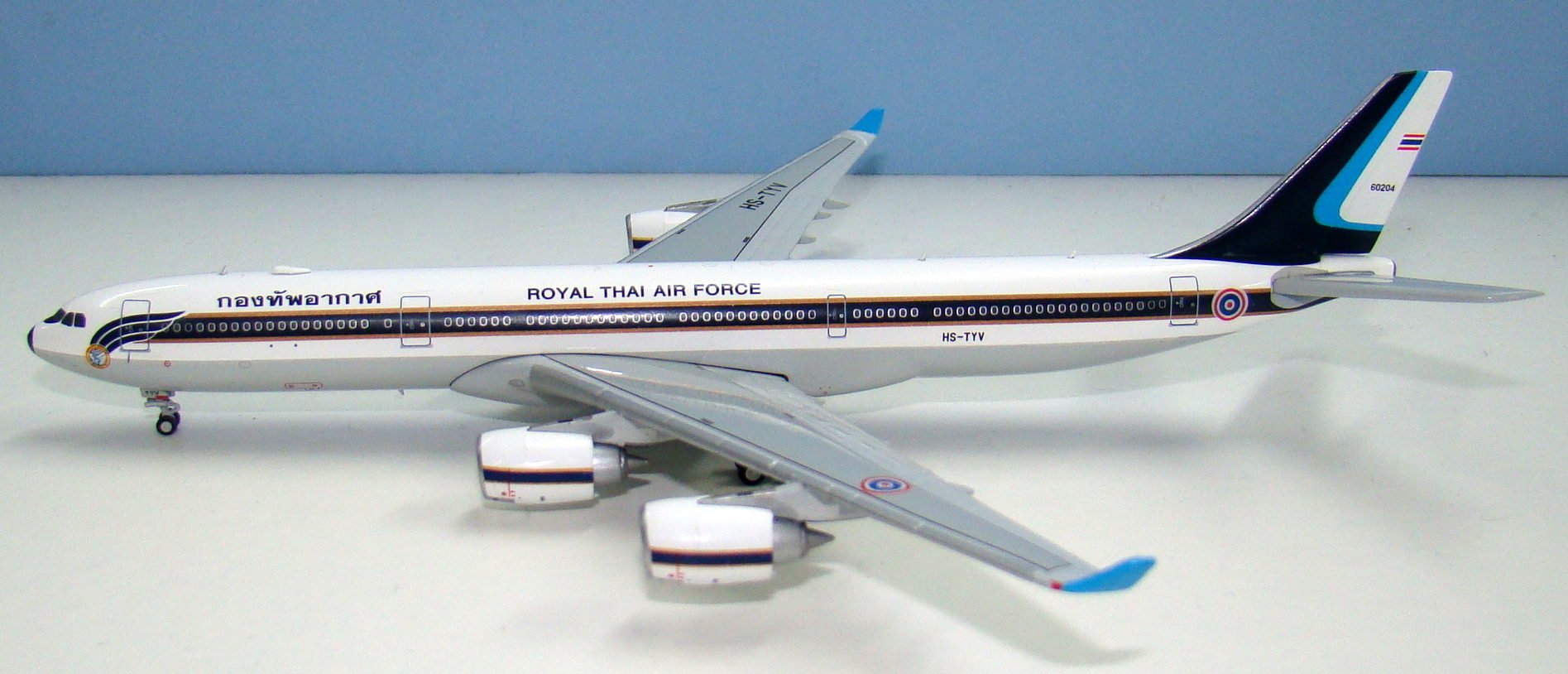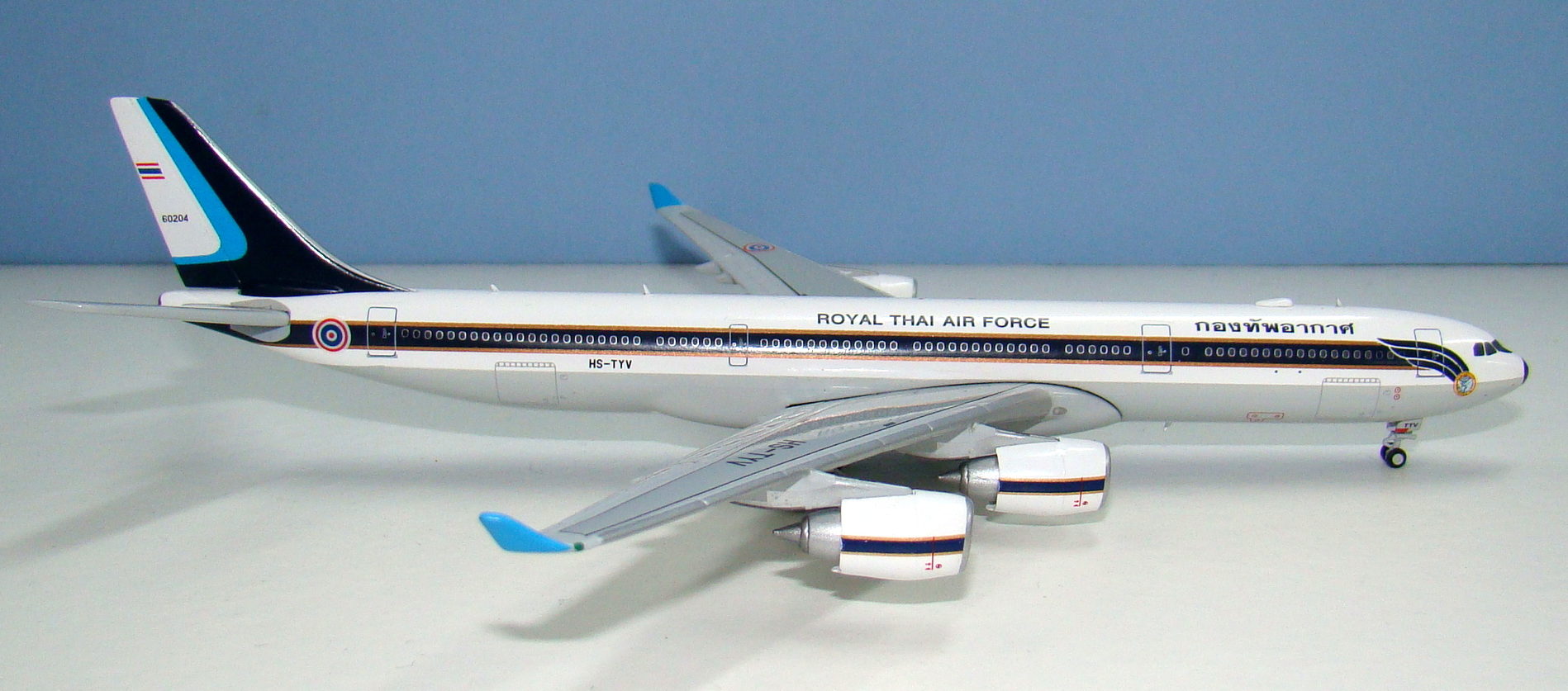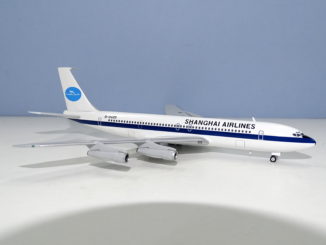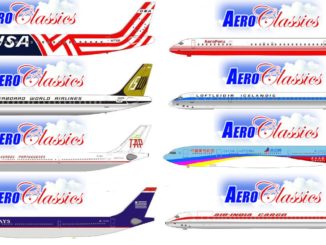
For a short time period during the early 2000s both Airbus and Boeing battled to develop ultra long-range derivatives of their respective A340 and 777 family aircraft. Both the resulting A340-500 and B777-200LR would only end up being footnotes in their parent type’s histories providing unlimited range, but at the cost of challenging operational economics. Recently one of the few remaining A340-500s has acquired a second career and both Phoenix and JC Wings have seen fit to provide 1/400 releases of her. In this review we look at the JC Wings version.
THE REAL THING
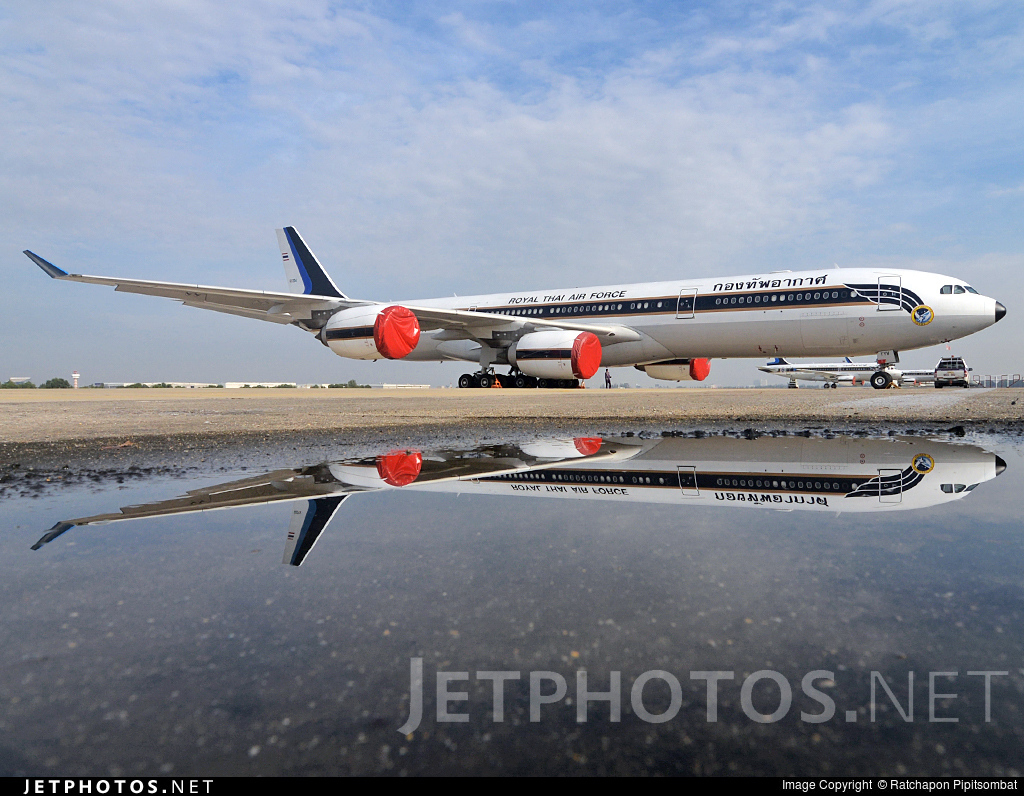
Both the A340-500 and 777-200LR were never able to fulfil anything more than a niche role in the world marketplace, since only a relatively small number of routes required the range they both provided. In the end only 34 A340-500s and 59 B777-200LRs were sold, but nonetheless both types pioneered the sort of services that are now beginning to become possible with normal variants of the A350 and B787.
The A340-500 beat its Boeing competitor into service and began operations with launch customer Emirates in late 2003. In February 2004 Singapore Airlines used the type to open the world’s longest commercial non-stop flight between Singapore and Los Angeles. By June they were using the A340-500 to fly direct to Newark over a distance of 15,343 km (9,534 nm).
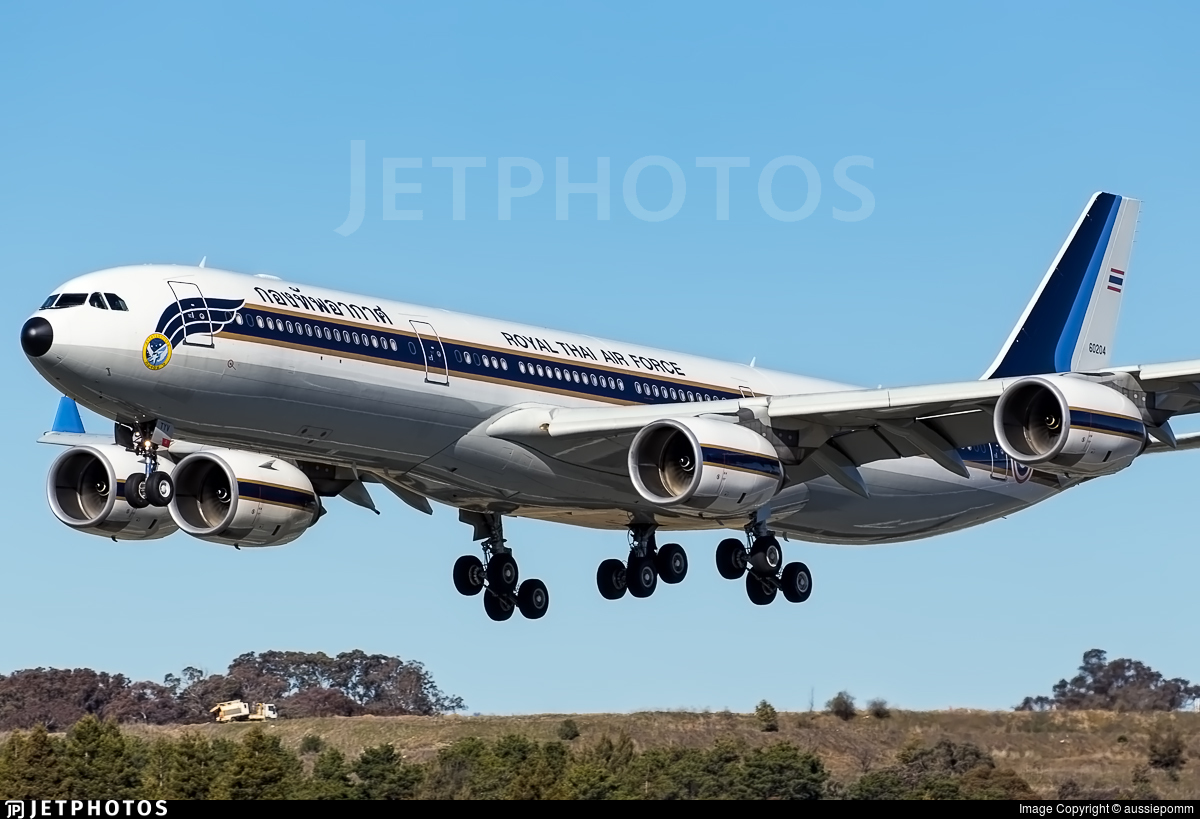
Thai Airways International also saw a niche for the A340-500 and received 4 in early 2005 (as well as 6 A340-600s). They opened non-stop service to New York from Bangkok and later turned the one stop Los Angeles route also into a non-stop. The A340-500 is possibly the most beautiful widebody airliner ever made. The A330/340 family have always been attractive but the combination of the airframe with the larger Rolls-Royce Trent 553 turbofans gave it almost perfect proportions (whereas the A340-600 looks just too long and thin). Unfortunately the beauty was not matched by the operating economics and in a high fuel price environment the economics of the type just didn’t stack up even with the premium traffic the type commanded.
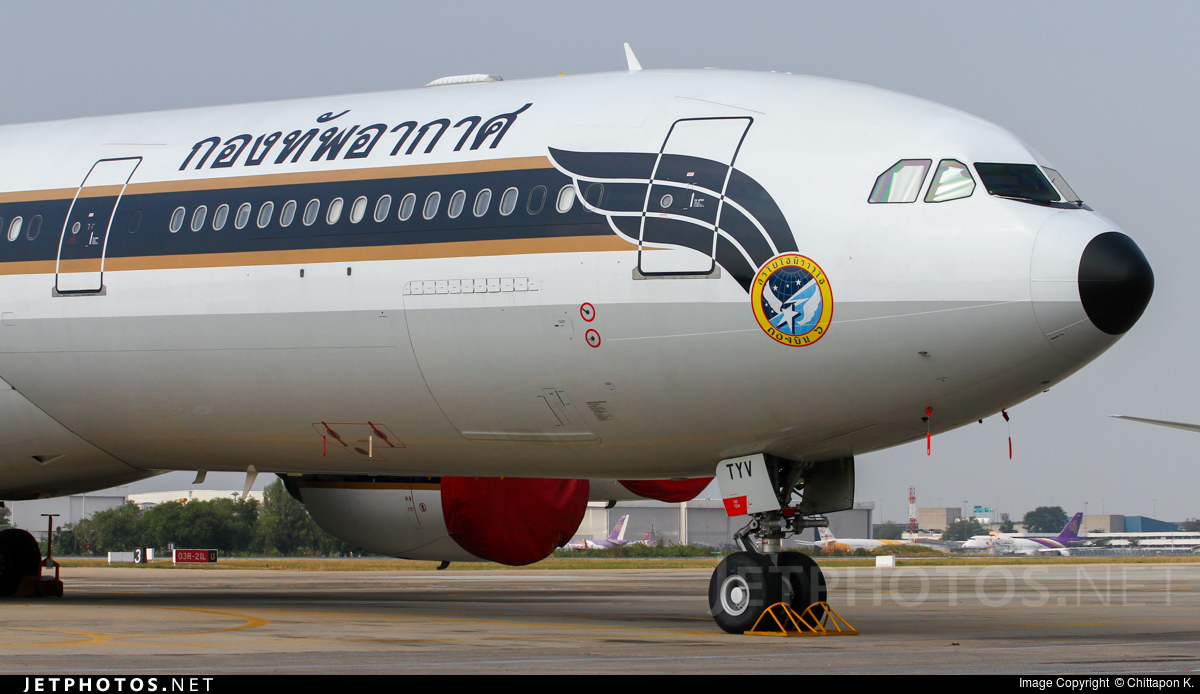
Thai ended the New York service in July 2008 and reverted back to a one-stop 777 on the Los Angeles route in May 2012. With that the A340-500s were removed from service and put into storage at Bangkok. Since then Thai has been trying to offload the aircraft, however their valuation is miles away from the markets and the sale of at least one of the aircraft, to Saudi Arabian Prince Faisal al-Saud, fell through in October 2013 when the $23.5 million offer price did not meet the near $67 million Thai had wanted.
Three of the four frames remain unsold and are unlikely to ever fly again, however in May 2016 it was announced that one of the aircraft, HS-TLC, was to be sold to the Royal Thai Air Force as part of a $49.18 million deal. The deal included the airframe, spare engines and parts, paint as well as the provision of mechanic, pilot and cabin crew training.
The aircraft entered service in September 2016 and wears dual civilian (HS-TYV) and military (60204) registrations. The A340-500 makes an excellent long-range private jet for governments and others with far too much money. As a lightly used 12 year old airframe there is still plenty of life in this aircraft yet.
THE MODEL
The format for my reviews is to split them into three key areas:
- The mould of the aircraft
- The paint and livery
- Printing and quality control
Each can get a maximum score of 10 for a section giving a maximum combined total score of 30.
THE MOULD
There has been a surprisingly high number of A340-500s made in 1/400 scale – 44 from 5 manufacturers (Dragon Wings, Gemini Jets, Herpa, Phoenix and now JC Wings). JC Wings are here using the Gemini Jets mould albeit a modified version of it. The Gemini mould dates from 2005 and originally had static gears and no aerials/domes. These have been added but overall this warmed up mould still struggles to compete against the more modern Phoenix mould.
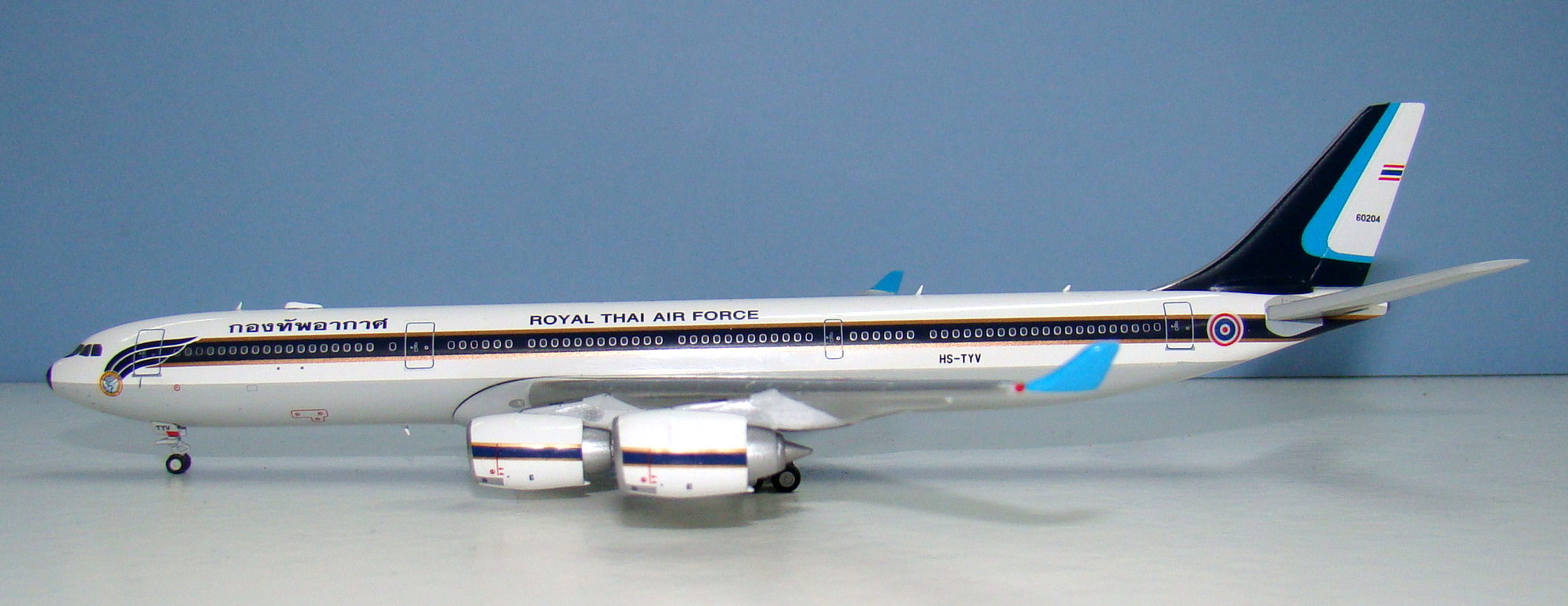
It isn’t a dreadful mould by any means but it does struggle to get some of the details correct. One of the most obvious elements of the A330/340 is the quite pointy nose and I feel on this mould it is just a little too short and rounded. Likewise the tailcone isn’t long and pointy enough either.

This being an older mould is a cradle fit (the Phoenix is a slot in wings mould). This isn’t actually a major issue for me as the seam follows an obvious join line on the real thing, however the A340 wing front fuselage join is really obvious and clearly tapered on the real thing whereas on the mould it is just rather formless. So it isn’t the seam itself but the poor detailing and moulding that let’s this mould down here.
The rest of the wings and engines are fine until you get to the winglets, which are not really the correct shape. They ought to be angular and wedge shaped but the model has a seemingly sloping curved front line, which is incorrect.

Updates to the old mould have improved it. The undercarriage is very nice (and doesn’t have any of the nosegear position issues of the newer JC Wings A330/340). The aerials and hump are also good, although as is common with JC Wings models the lower rear aerial is missing. The other four are present.
JC Wings have taken quite a few moulds from the old Gemini back catalogue and updated them recently. This is generally praiseworthy except that often the older Gemini moulds are distinctly ordinary and can’t compete well with newer moulds from Phoenix or Aeroclassics (at least widebodies anyway).
SCORE – 7
PAINT & LIVERY
The Royal Thai Air Force livery is quite complicated and at the same time also quite difficult to reproduce. As a livery it is pretty nice. I like cheatlines but I have to admit the tail is distinctly underwhelming and doesn’t say Thailand to me. Depending on the light the colours on this livery can look quite different. Some photos show a bright gold and deep rich blue, whilst others show a duller gold and darker matt blue.
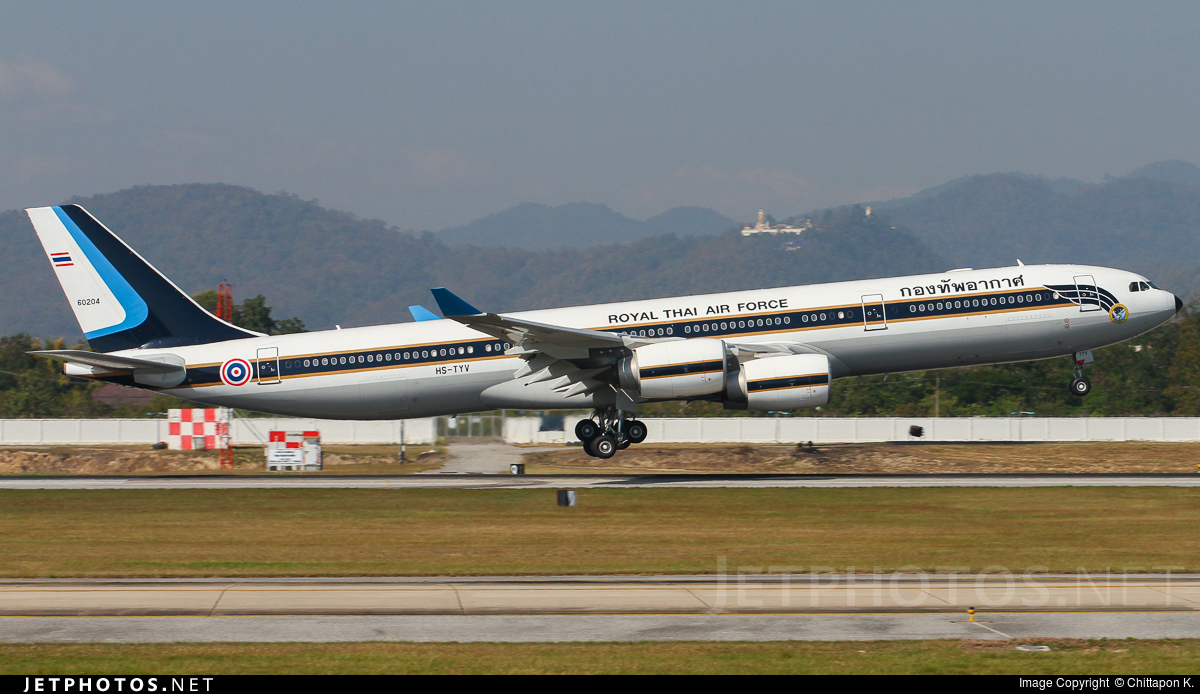
JC Wings have gone down the latter route on this model, which makes it look a bit drabber and I have to admit not as attractive as it may well be in person. The gold is the worst culprit here, I think it is too dark. The dark blue looks a little washed out too but in general it’s ok.
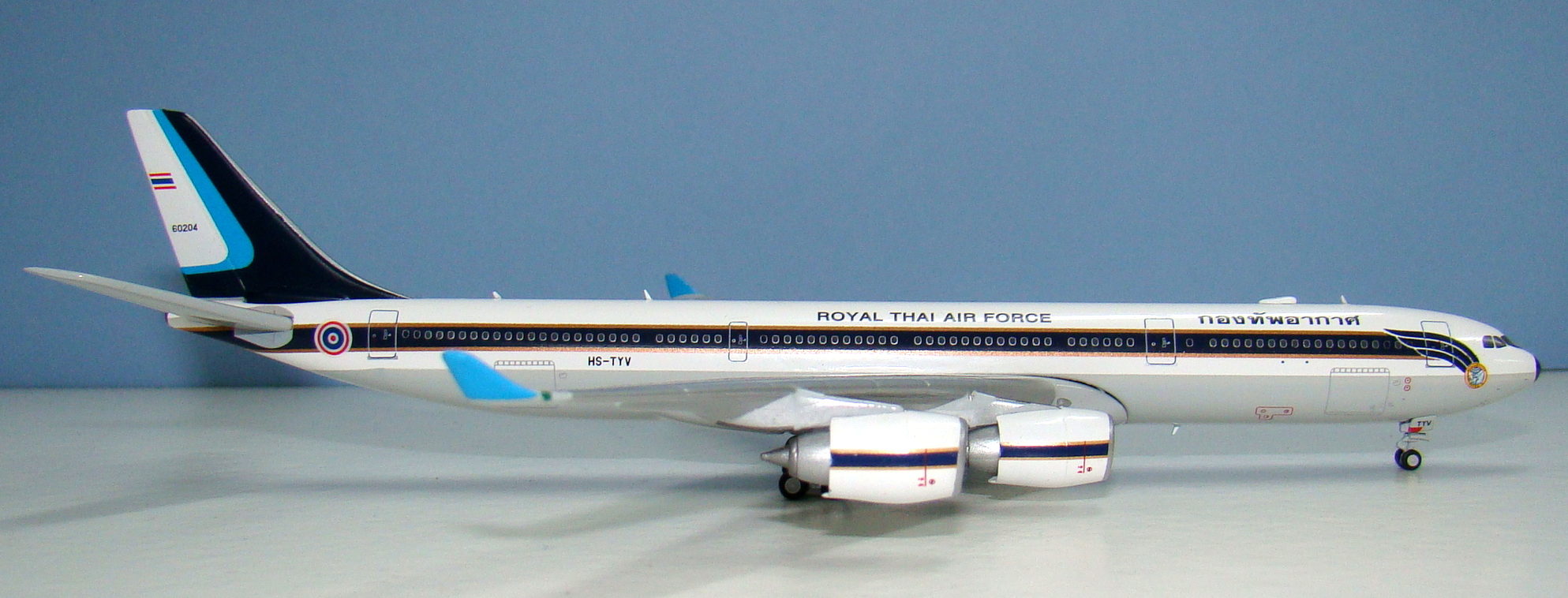
Looking at the livery application and it is not bad but could be better. I think the grey belly is a little too high, which pushes the rest of the scheme upwards a bit and makes the titles slightly too short. The mould’s stumpy nose makes the black nosecone look a little large but it is the mould not the livery application at fault here.
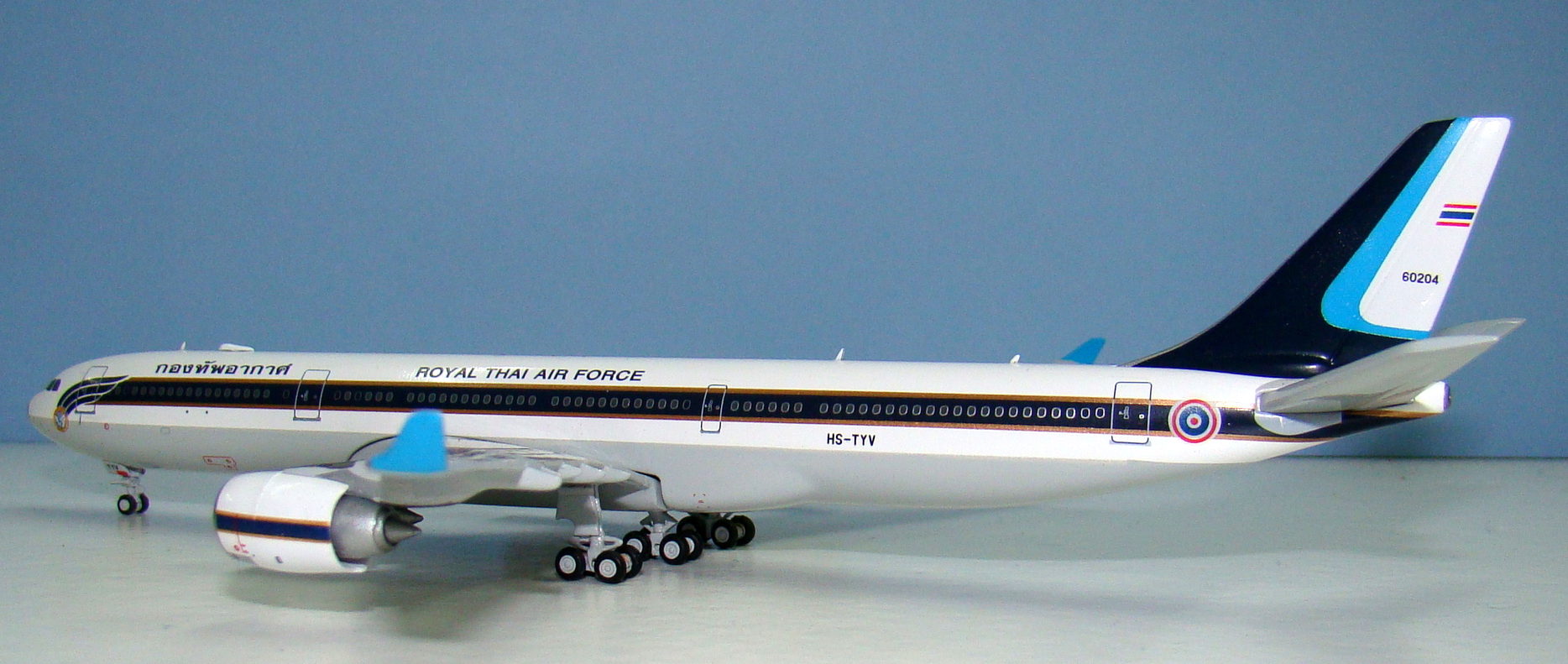
The forward roundel at the end of the cheatline is well printed and stands out even under magnifying glass. All the rest of the livery components are well done until you get to the vertical stabiliser. Sadly JC Wings have neglected to spot that the tail design is not horizontal at the rear and the blue stripes ought to move downwards.
This is a complex livery to recreate but I feel with just a bit more attention to detail JC Wings would have done a better job here. A quick look at the Phoenix release of this model seems to suggest they did pay more attention.
SCORE – 7
PRINTING & QUALITY CONTROL
Printing detail is JC Wings strongpoint and they have done a good job as I would expect them too. The overwing markings are particularly nicely detailed as are the engine nacelles. Unfortunately the inside of the engines and the fan blades are yet again silver. They look far too plasticy because of this and it should be a simple fix to make them darker like the real thing.
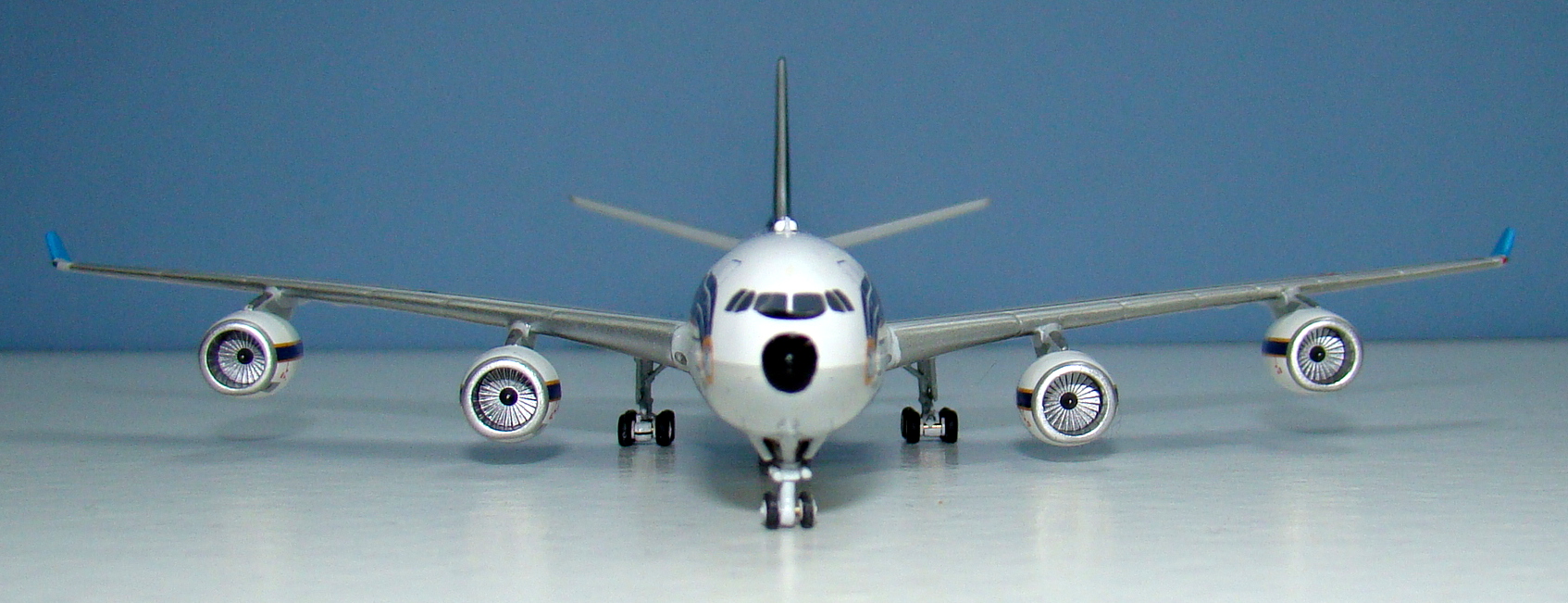
Construction of the model is fine, but I do feel that the seam join between the wing and fuselage is not as tight as it ought to be, especially at the rear. There is quite a substantial gap when you look at the underside just after the centre maingear.
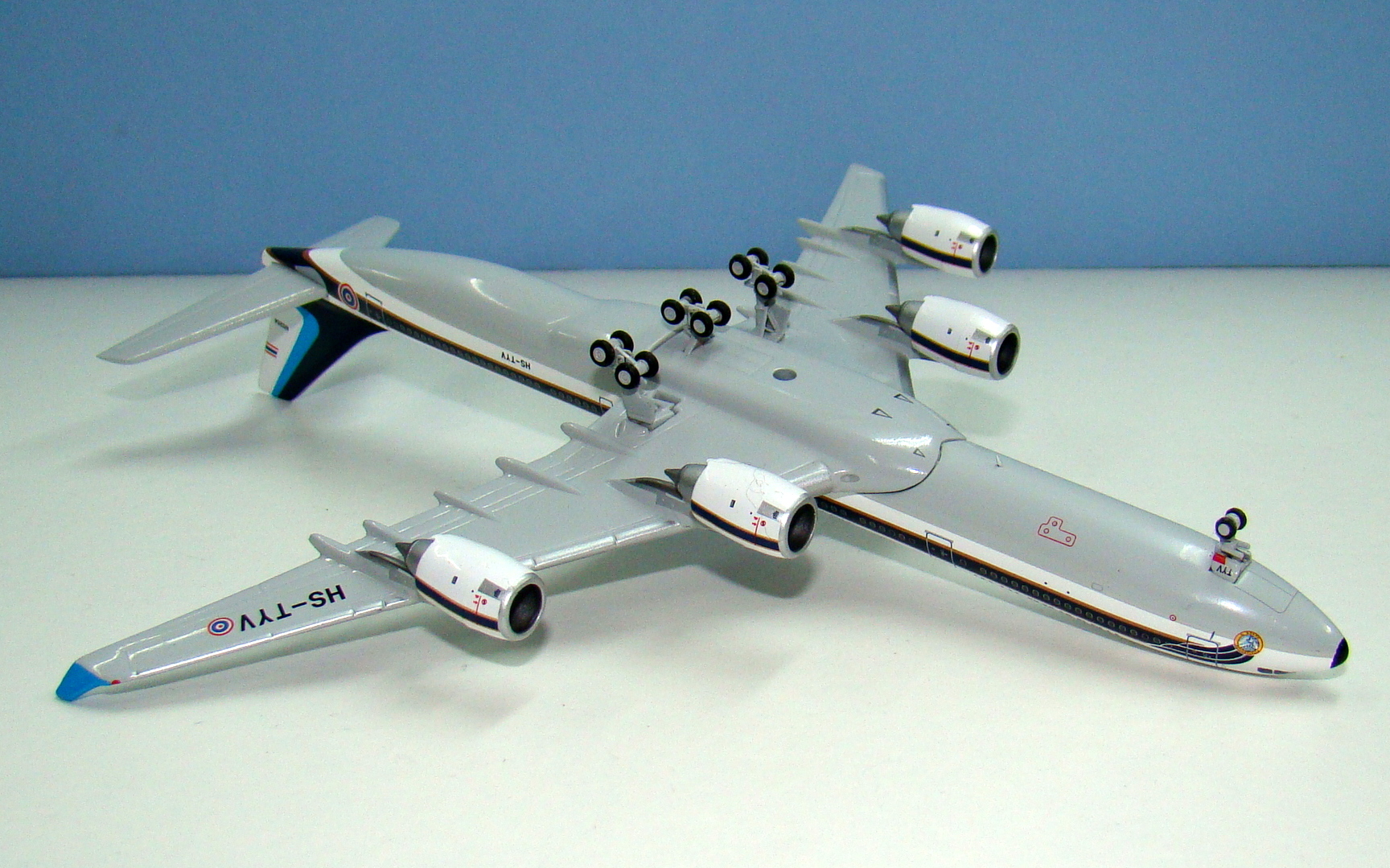
SCORE – 8
CONCLUSION
When two manufacturers release the same exact aircraft, at the same exact time, you do expect direct comparisons to be made. JC Wings start behind by having to use the inferior Gemini A340-500 mould however they also do themselves little favour by not working as hard on some of the details. In this case the Phoenix release does look better. On the plus side JC Wings printing continues to be excellent and it has been a long time since I needed to complain at the fundamental quality of the build, something which Phoenix continues to struggle with.
FINAL SCORE – 22


